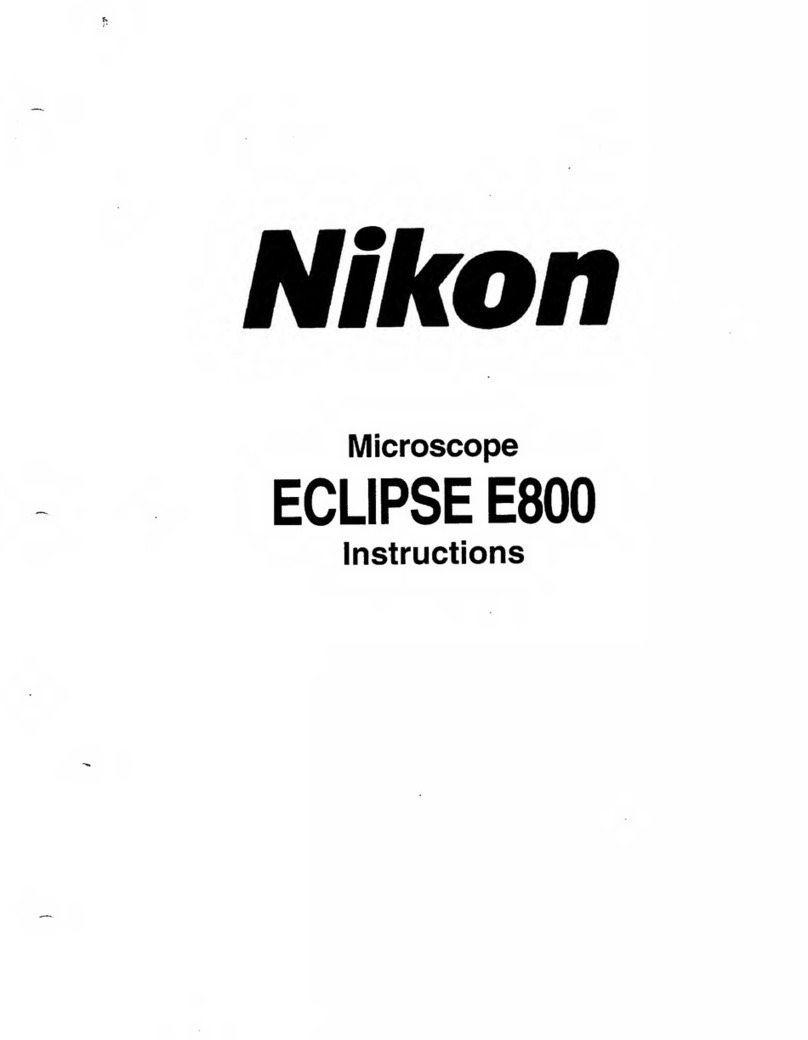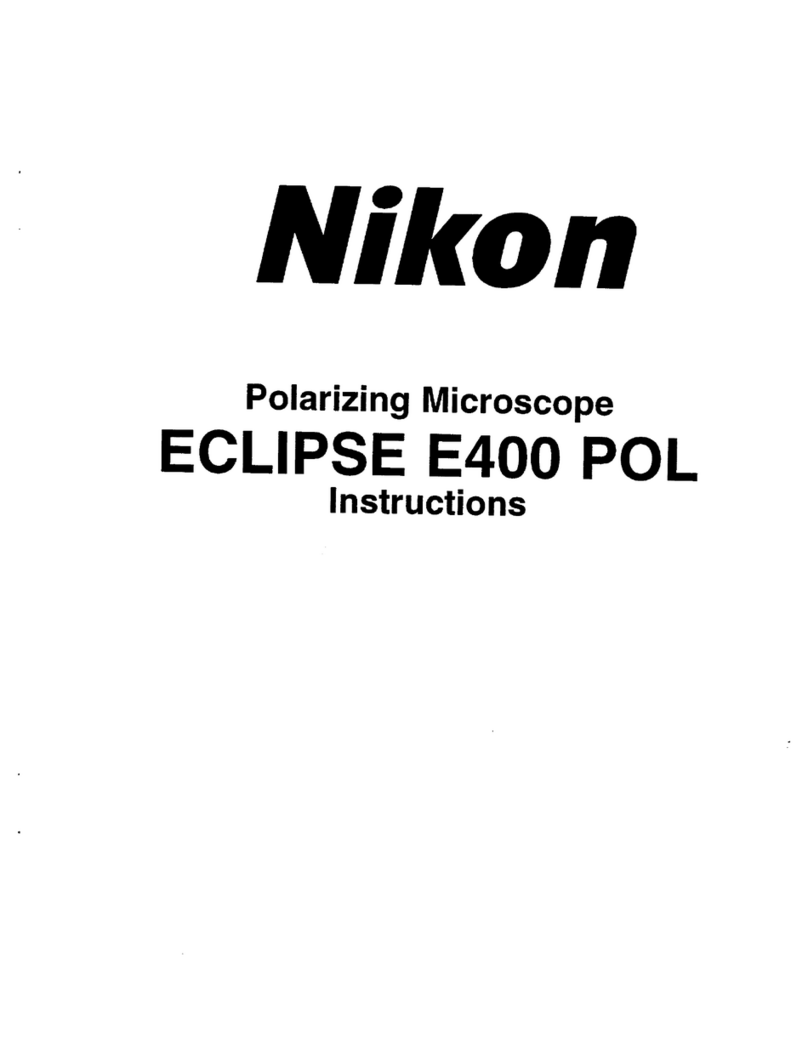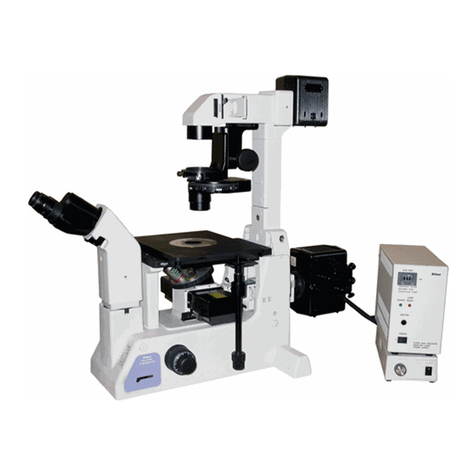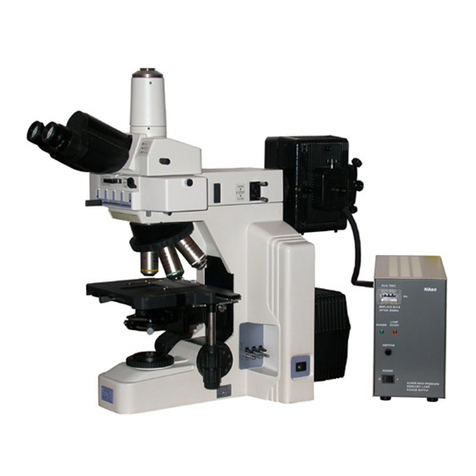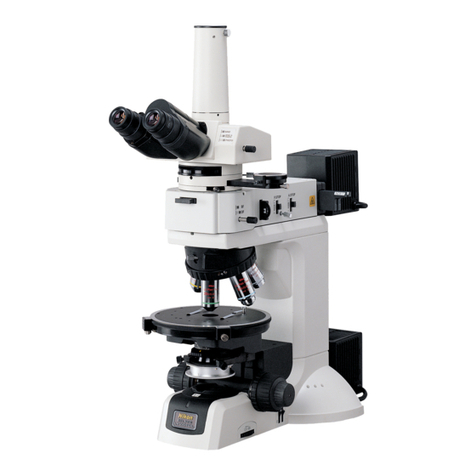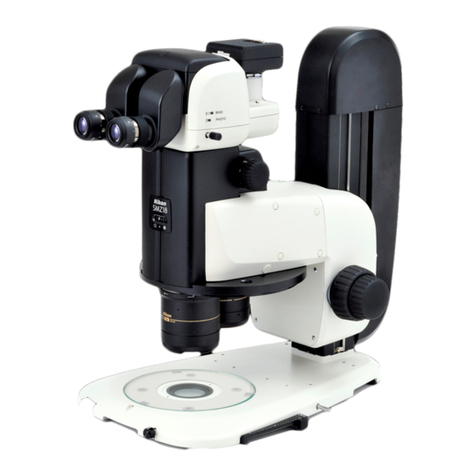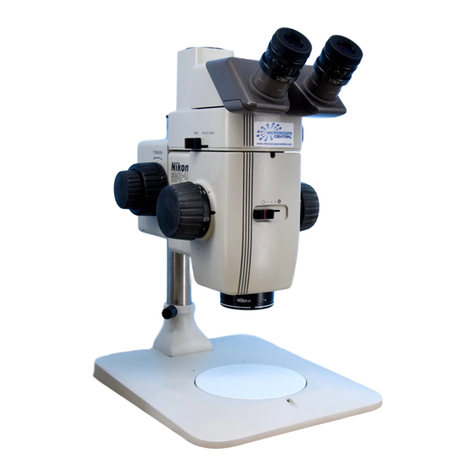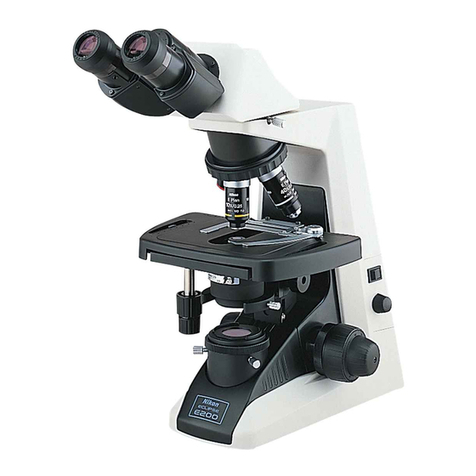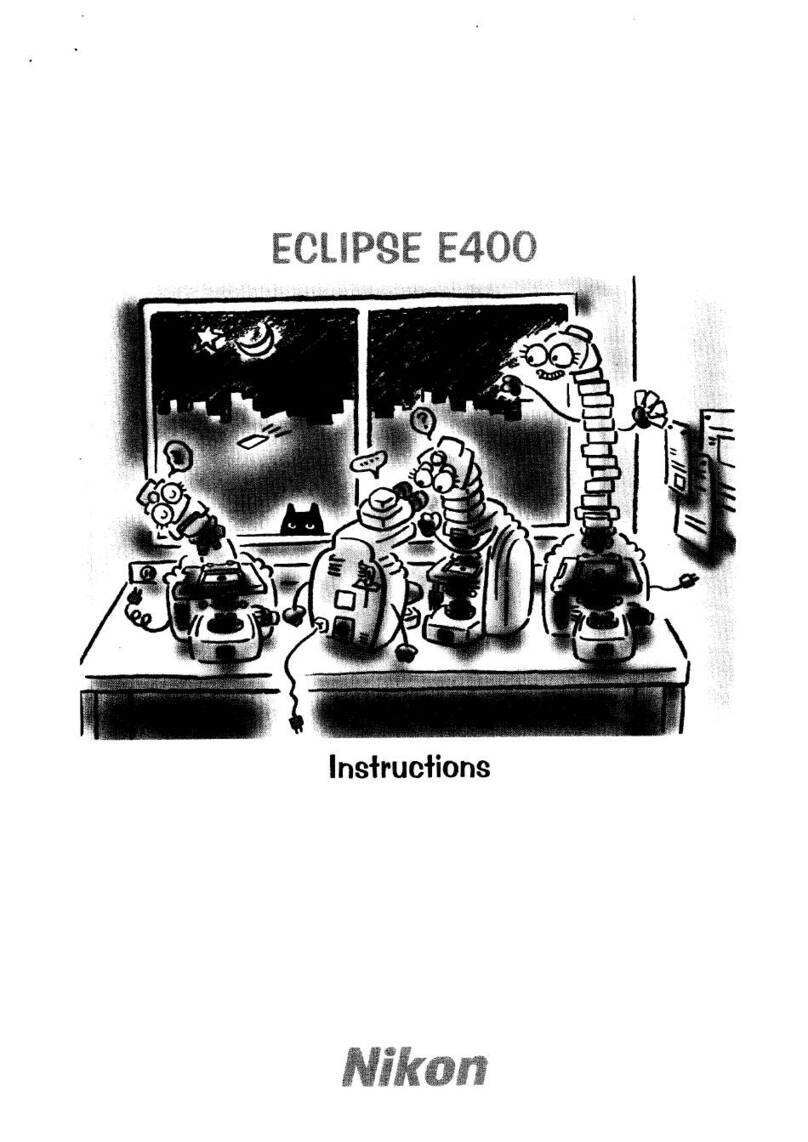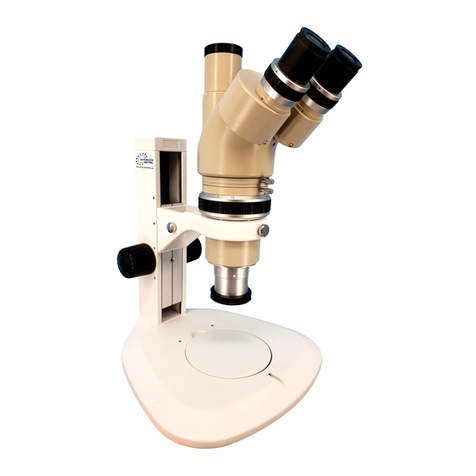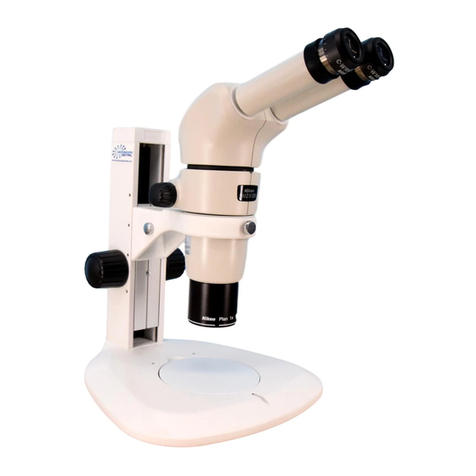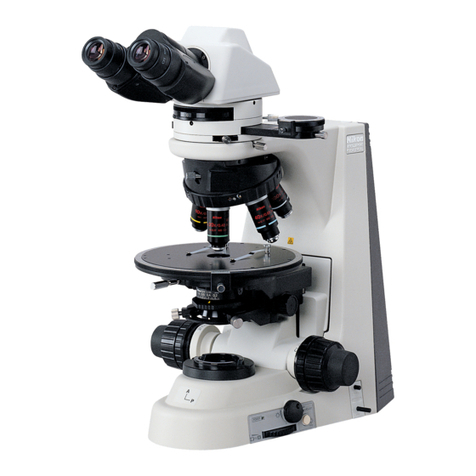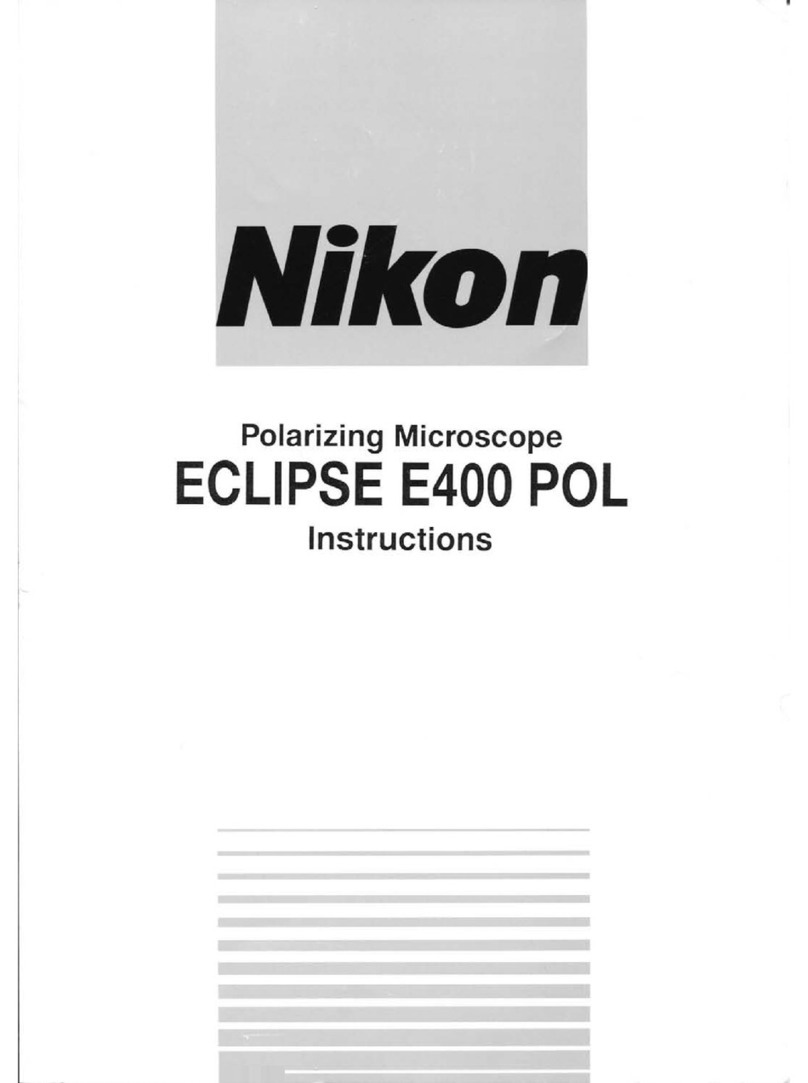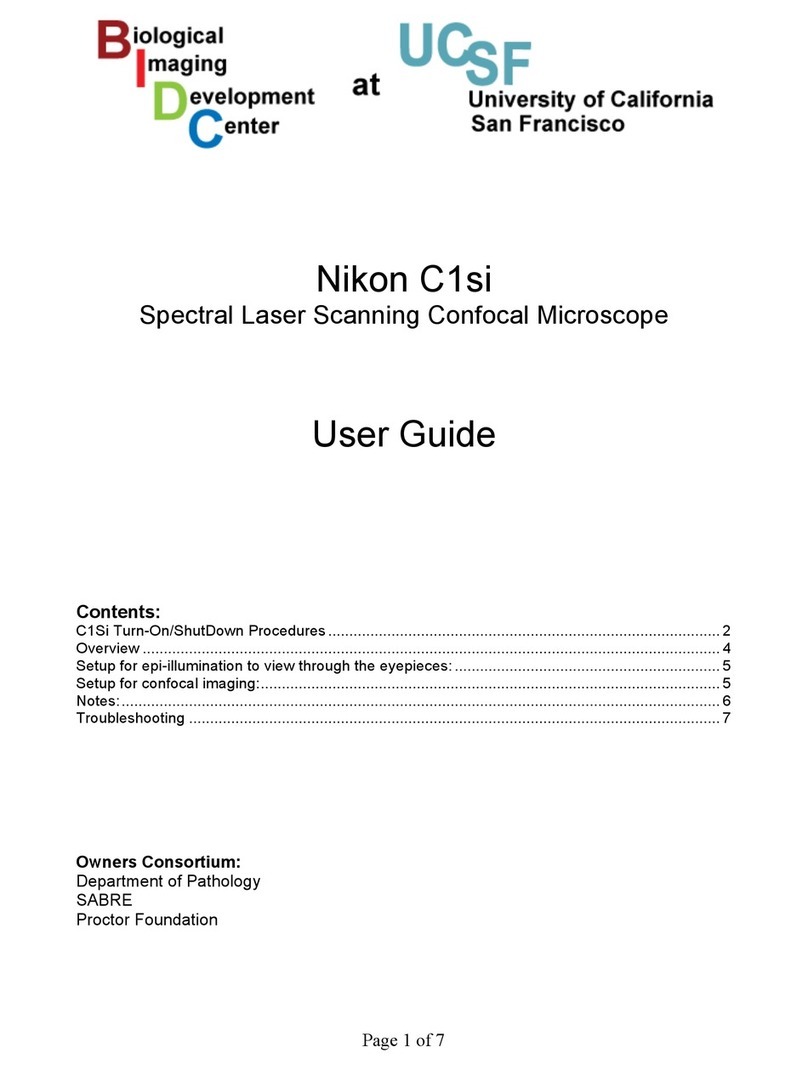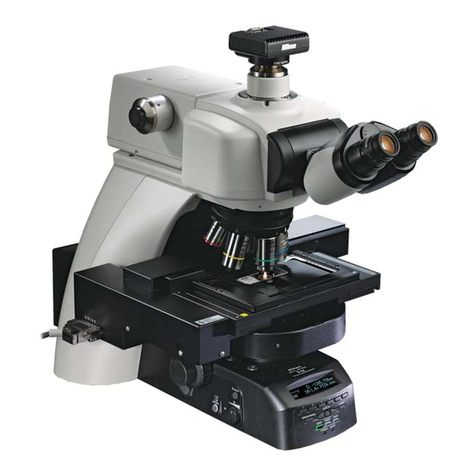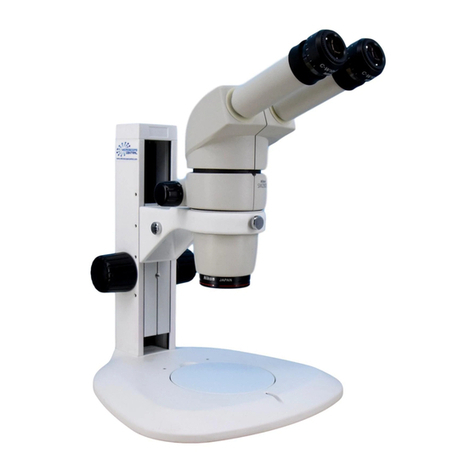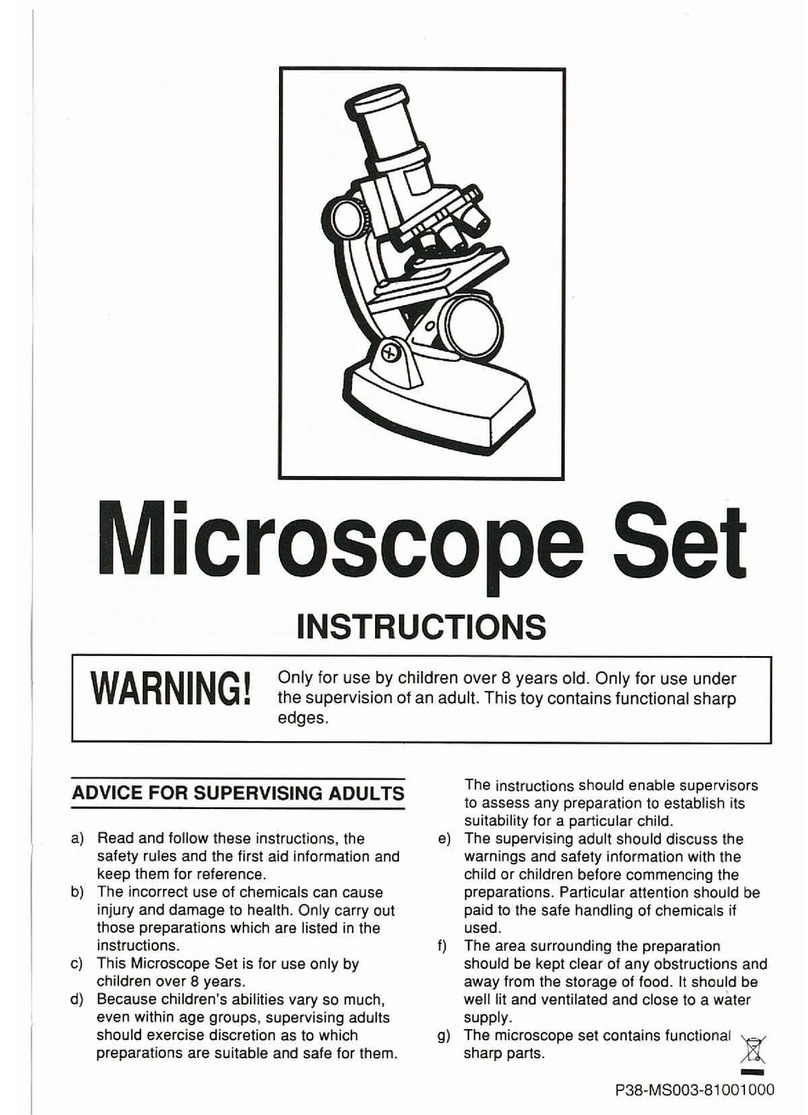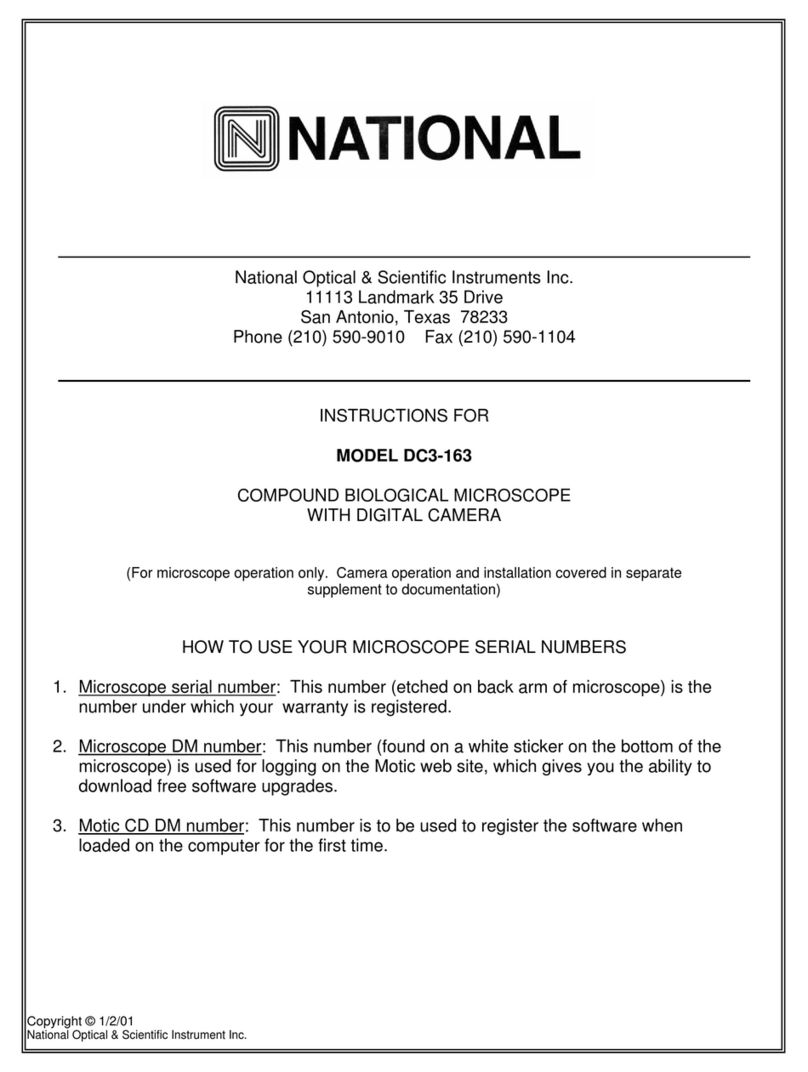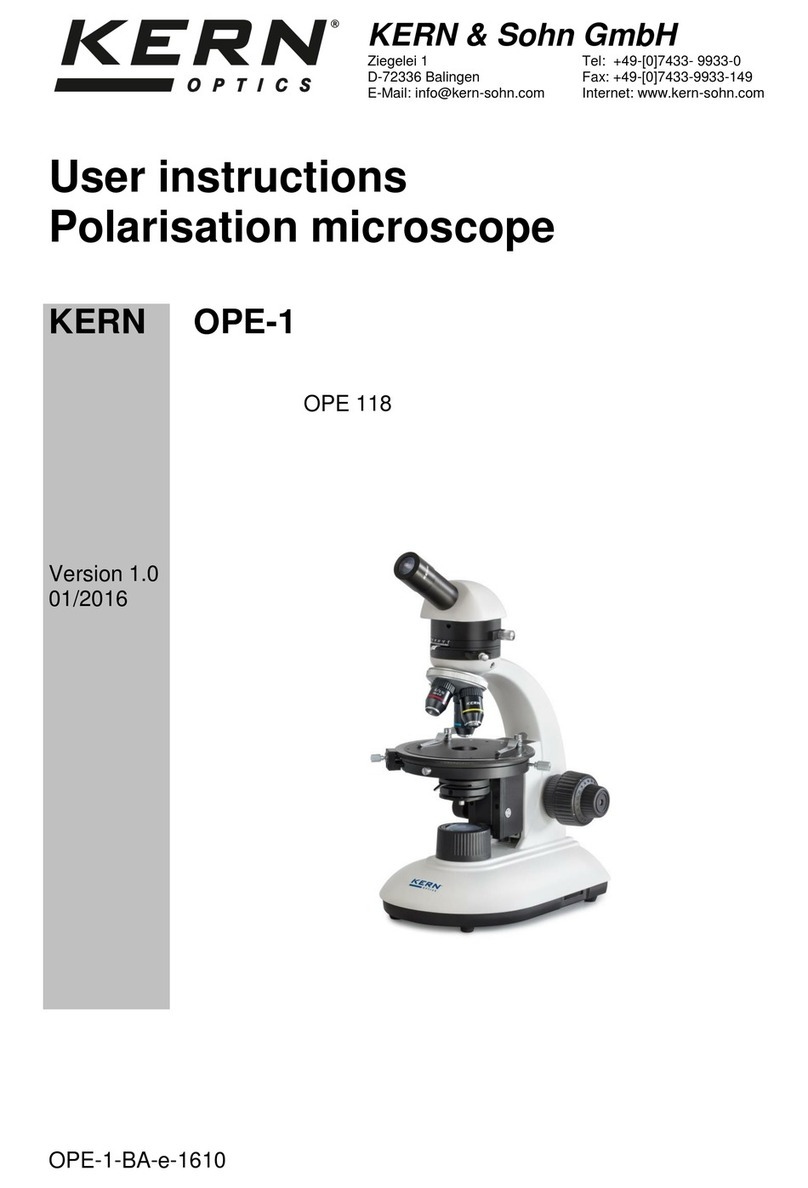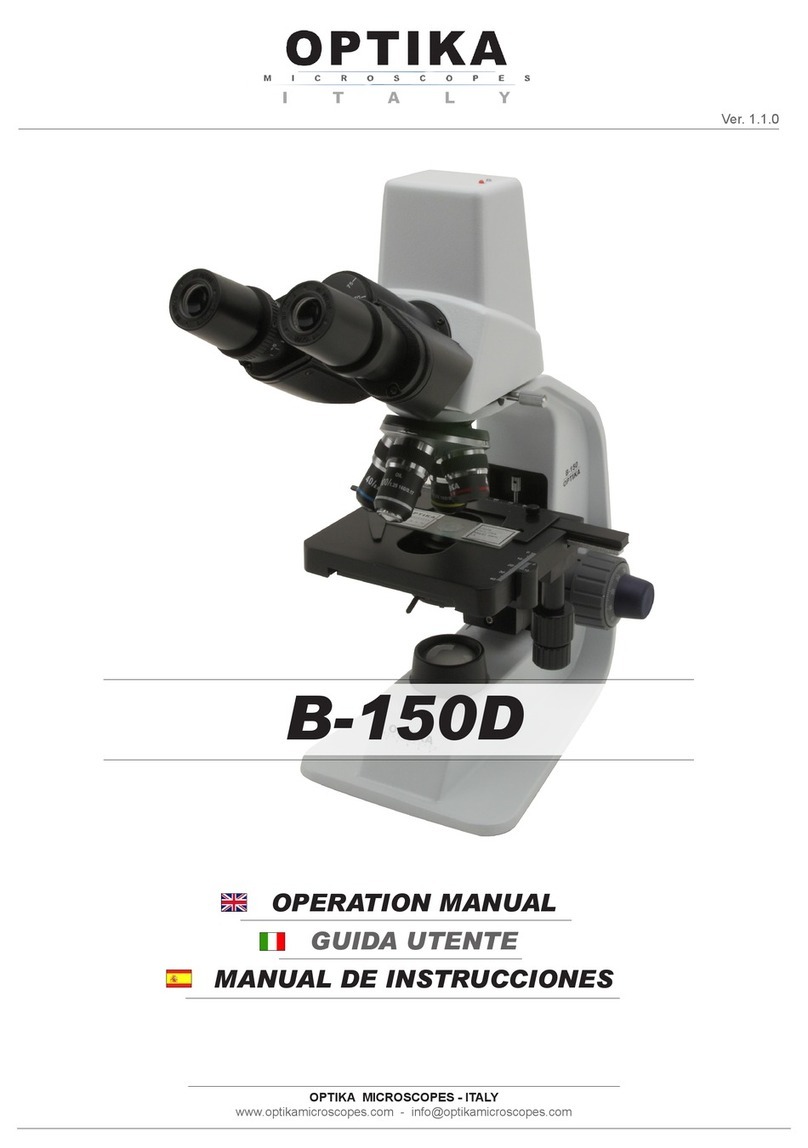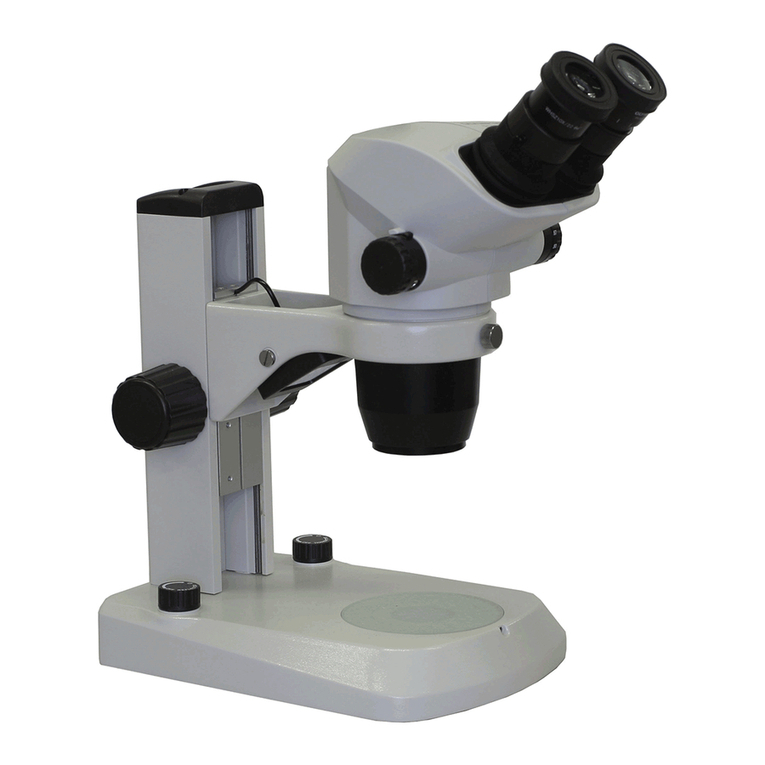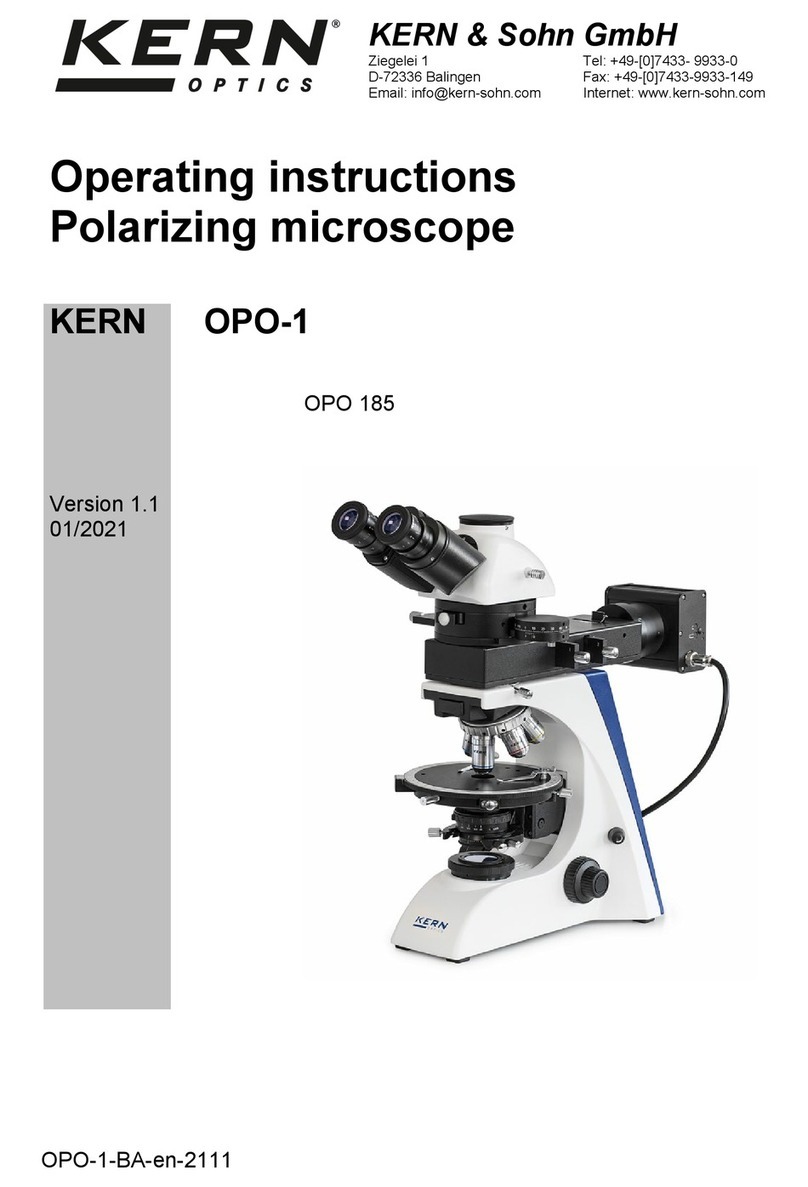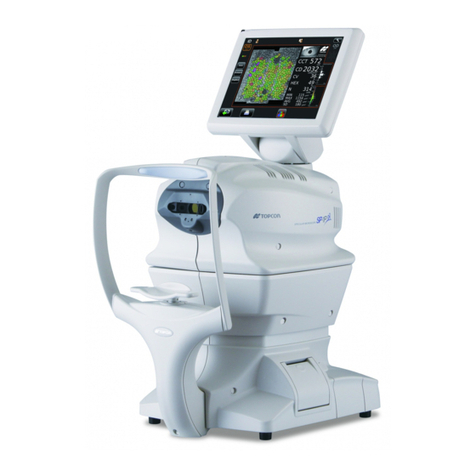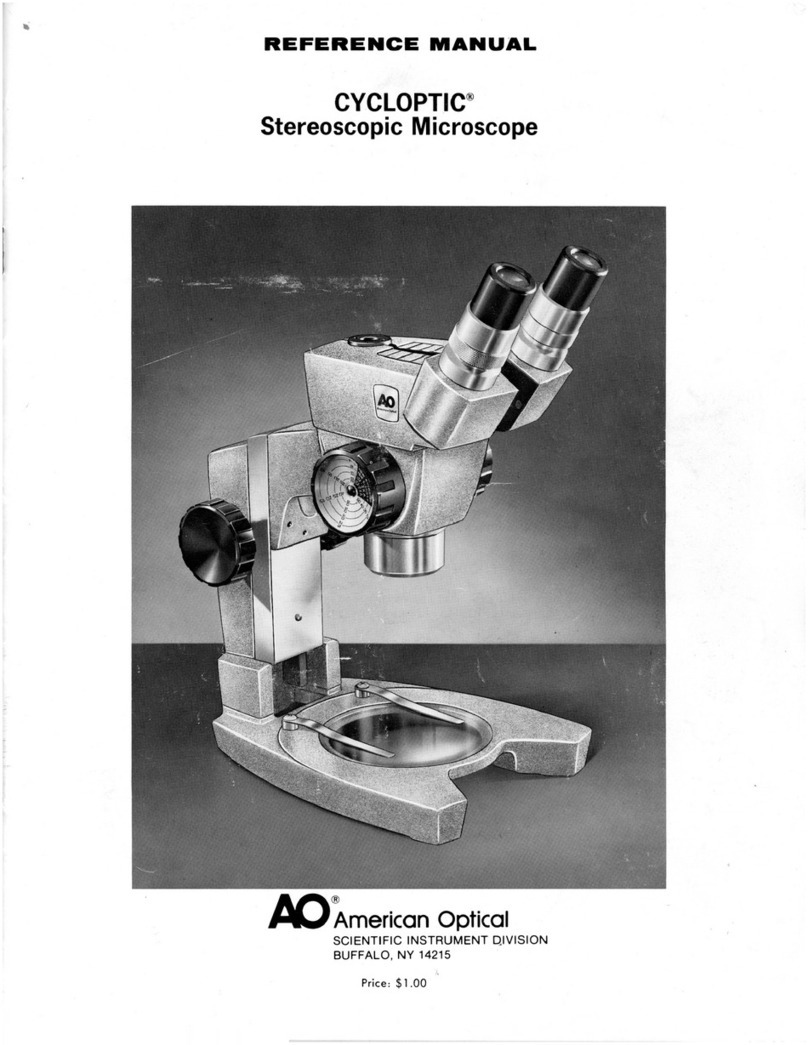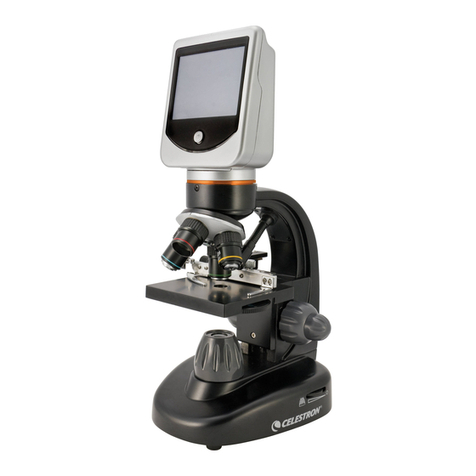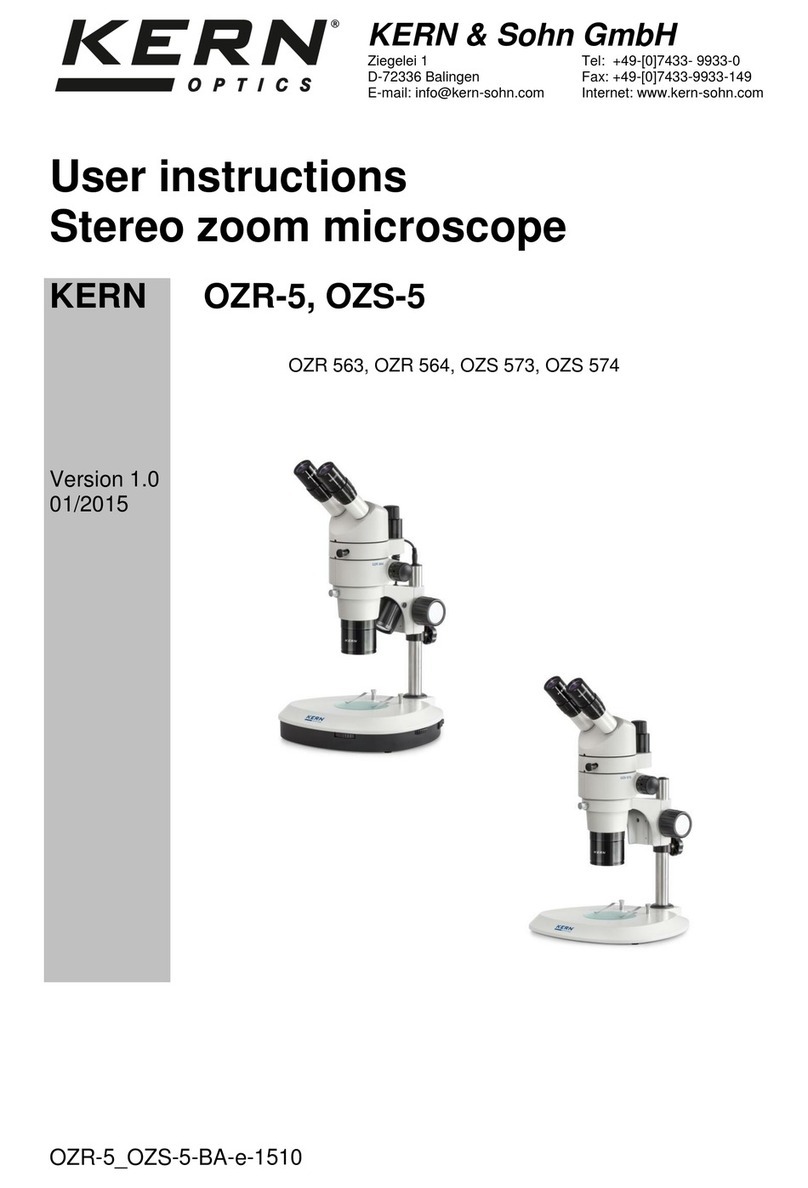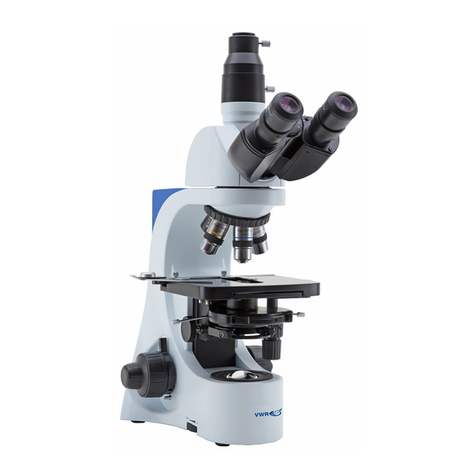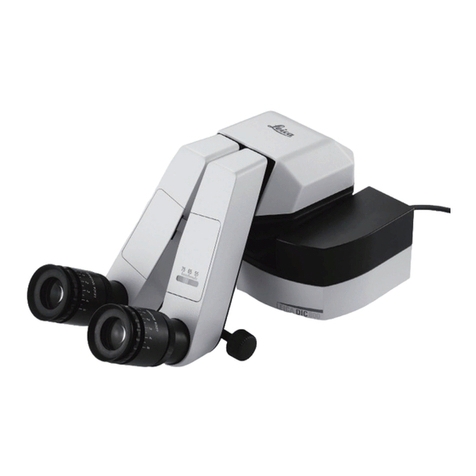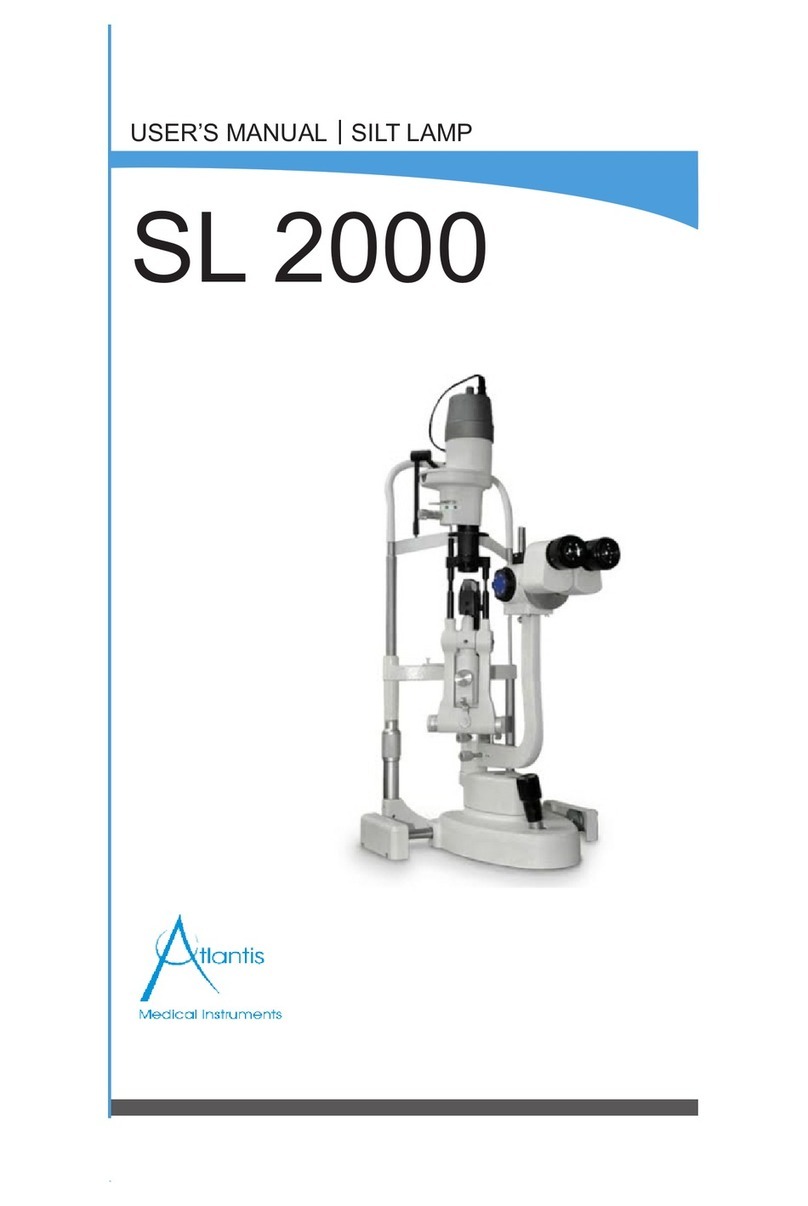Safety Precautions
4
6. Heat from the light source
The lamp and surrounding areas (including the lamphouse) will become very hot during and
immediately after a period of illumination.
• Risk of burns. Never touch the lamp or surrounding areas during or immediately after a period of
illumination.
• Make sure the lamp and surrounding areas have cooled sufficiently before attempting to replace the
lamp
• To avoid risk of fire, do not place fabric, paper or highly flammable volatile materials such as
gasoline, petroleum benzine, paint thinner or alcohol near the lamphouse while the lamp is lit or
during a period of around thirty minutes after the lamp has been turned off.
7. Mercury lamps and xenon lamps (when the digital imaging head or the D-FL Epi-illumination
attachment is attached)
The mercury lamp (or xenon lamp) for the digital imaging head or the D-FL Epi-illumination
attachment requires special care during handling. For safe and correct use of this system, carefully
read the warnings below. Keep in mind all potential hazards. Additionally, carefully read the manual for
the super high-pressure mercury lamp power supply (or high-intensity light source) and the manual (if
provided) from the lamp manufacturer, then follow the instructions given therein.
Hazards of Mercury Lamps and Xenon Lamps
1) When lit, mercury (and xenon) lamps radiate ultraviolet light that can damage your eyes and skin.
Direct viewing of the light may result in blindness.
2) The lamps contain sealed gas under very high pressure, pressure that increases when the lamp is on.
If the lamp is scratched, fouled, subjected to high external pressure or physical impact, or used
beyond its service life, the sealed gas may escape or the lamp may burst, resulting in gas inhalation,
injury from glass, or other injury.
3) When the lamp is lit, the lamp and surroundings will become extremely hot. Touching the lamp with
bare hands may result in burns; flammable materials placed near the lamp may ignite.
4) Using the wrong lamp type may result in accidents, including bursting of the lamp.
Safety is a top design priority for Nikon products. The preceding hazards should pose no danger as
long as the user observes all of the warnings and cautions given in the manuals, and uses the system
only for its intended purpose.
However, failure to heed the warnings and cautions given in the manuals, subjecting the system to
shock or impact, or attempting to disassemble the system may result in accidents and injury. Make
sure you are familiar with and adhere to all warnings and cautions.
8. Always turn off the lamp when changing filter cubes (when the digital imaging head or the D-FL
Epi-illumination attachment is attached to the microscope).
When changing filter cubes, always turn off the digital imaging head or the D-FL Epi-illumination
attachment. Leaving the lamp on may result in ultraviolet exposure.
9. Leave the D/UV slider in the optical path (when using the digital imaging head or the D-FL
Epi-illumination attachment).
Always leave the D/UV slider (which is one of the D-ES EPI ND slider types) in the optical path when
performing Epi-bright-field microscopy, Epi-dark-field microscopy, or Epi-DIC microscopy with the
mercury lamphouse attached. If the slider is moved out of the path, ultraviolet light will be radiated
and damage your eyes.
WARNING
